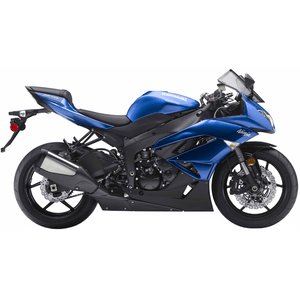Kawasaki ZX-6R Ninja (1994–1997): A ’90s Sportbike Icon Revisited 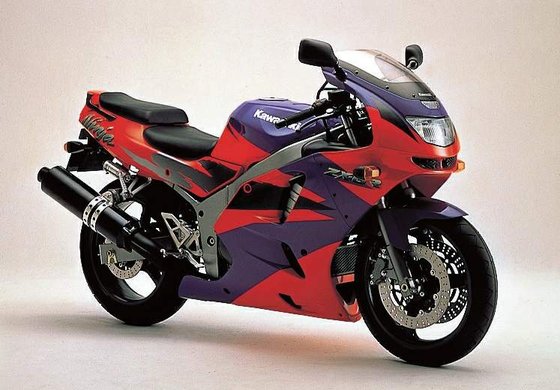
Introduction
When the Kawasaki ZX-6R Ninja roared onto the scene in 1994, it wasn’t just another middleweight sportbike—it was a statement. This generation of the Ninja arrived during a golden era of 600cc supersport competition, where manufacturers battled for supremacy with razor-sharp handling, screaming engines, and aggressive styling. Riding the ZX-6R today feels like stepping into a time capsule, one that perfectly encapsulates the raw, analog thrill of ’90s motorcycling. With its 599cc inline-four engine, race-bred chassis, and unmistakable fairing design, the ZX-6R remains a compelling machine for riders who crave nostalgia paired with timeless performance.
Let’s dive into what makes this generation of the Ninja a cult classic—and why it still turns heads in 2024.
Design & Aesthetics 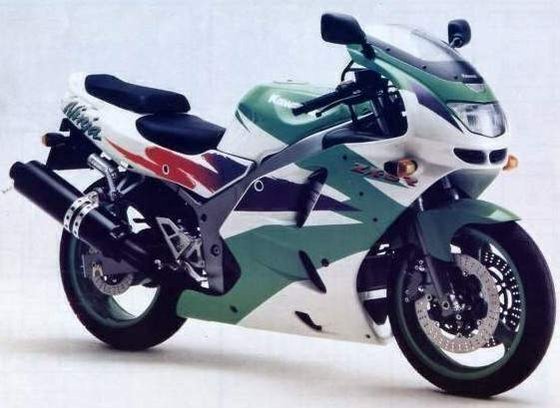
The ZX-6R’s design was unapologetically bold for its time. Kawasaki’s engineers leaned into the "big bike" aesthetic, giving the Ninja a muscular stance that mirrored its larger ZX-9R and ZX-11 siblings. The twin round headlights, integrated into a wind-cheeking fairing, became an instant signature. While competitors like the Honda CBR600F2 opted for sleek minimalism, the ZX-6R’s angular bodywork and dual exhaust pipes (pre-1996 models) screamed aggression.
The cockpit was pure ’90s sportbike: a simple analog tachometer dominated the cluster, with a digital speedometer tucked beside it. The riding position? Committed. The clip-on handlebars placed riders in a forward lean, while the 810mm (31.9-inch) seat height accommodated shorter inseams without sacrificing cornering clearance.
Engine Performance: The Screaming 599cc Inline-Four 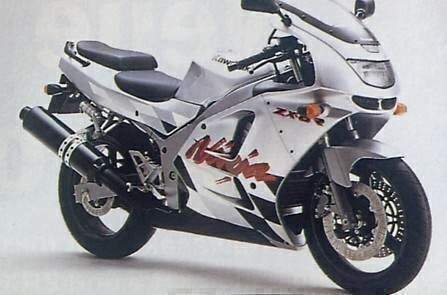
At the heart of the ZX-6R lies its 599cc liquid-cooled inline-four engine—a masterpiece of mid-’90s engineering. With 105 HP (76.5 kW) at 12,500 RPM and 63.7–65 Nm (47–48 lb-ft) of torque at 10,000 RPM, this engine was built to dominate the upper rev range. Throttling up through the six-speed gearbox reveals a powerband that rewards aggression: below 8,000 RPM, the Ninja feels polite, almost docile. But crack open the Mikuni CVKD36 carburetors past 10,000 RPM, and the engine transforms into a snarling beast, pulling relentlessly to its 13,500 RPM redline.
The dyno charts tell an interesting story. While the ZX-6R’s midrange torque (peaking at 63.7 Nm) actually outperformed rivals like the Honda CBR600F2, period reviews often criticized the Ninja for feeling "peaky." This paradox stems from its gearing: shorter ratios amplified the need to keep the engine "on the boil," masking its midrange grunt. On the open road, though, the Ninja’s top-end rush is intoxicating. Kawasaki claimed a top speed of 230–260 km/h (143–161 mph), and even today, it’ll easily outpace modern traffic.
Handling & Dynamics: A Mixed Bag 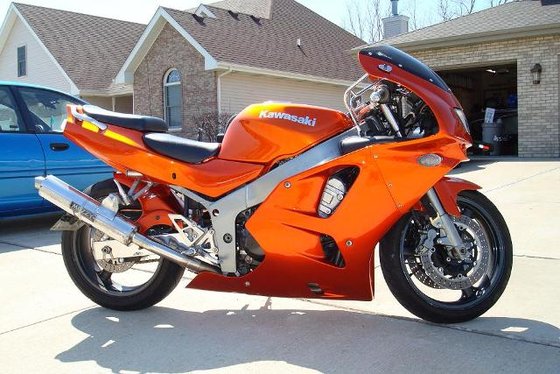
The ZX-6R’s chassis was a study in contrasts. Its 41mm Showa telescopic forks and Showa rear shock (adjustable for preload and rebound) were competitive on paper, but real-world feedback revealed flaws. On smooth tarmac, the Ninja felt planted, with a 23.5-degree rake and 1,466mm (57.7-inch) wheelbase inspiring confidence mid-corner. Throw it into a hairpin, and the 120/60-ZR17 front and 160/60-ZR17 rear tires (a wide rear for the era) delivered grip worthy of its "Race Replica" badge.
But push harder on bumpy roads, and the suspension’s limitations surfaced. Testers noted a "bouncy" rear end and vague front feedback, especially compared to the Honda CBR600’s buttery-smooth damping. The Yamaha FZR600R, despite its dated frame, felt lighter and more flickable. Kawasaki’s decision to prioritize stability over agility made the Ninja a formidable highway missile but a reluctant backroad scratcher.
Braking performance split opinions. Dual 300mm front discs (270mm on early models) with four-piston calipers provided ample stopping power, but the soft suspension often led to nose-diving under hard braking—a quirk that required careful weight distribution.
Comfort & Practicality: Tourer or Torture Rack?
Sportbikes of the ’90s weren’t known for comfort, and the ZX-6R was no exception. The thinly padded seat and aggressive ergonomics made long rides a test of endurance. That said, Kawasaki’s fairing design deserves praise: its wind protection eclipsed the Yamaha FZR’s, making 160 km/h (100 mph) cruising feel manageable. The 18-liter (4.8-gallon) fuel tank offered decent range, though spirited riding could drop fuel efficiency to 5.3 L/100 km (45 mpg).
For pillions, the ZX-6R was unforgiving. The rear seat was a token gesture—better suited for strapping down a tail bag than accommodating a passenger.
Competition: How the Ninja Stacked Up 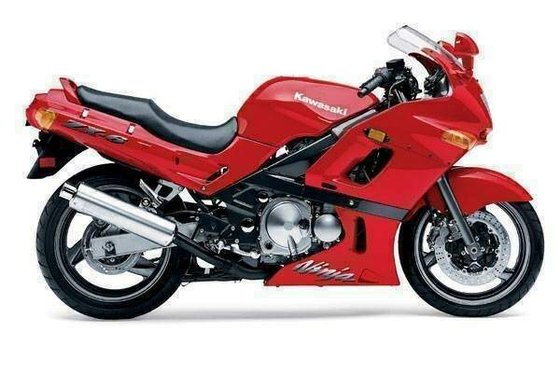
The mid-’90s 600cc class was a battlefield. Here’s how the ZX-6R fared against its rivals:
- Honda CBR600F2/F3: The class benchmark. Honda’s CBR combined silky-smooth power delivery with neutral handling, making it the "everyday" sportbike. Testers praised its flexibility, though its 143 mph top speed trailed the Ninja’s.
- Yamaha FZR600R: Lighter (by 14 kg/31 lbs) and sharper, the FZR excelled in tight corners. Its 140 HP engine lacked the Ninja’s top-end punch but offered crisper throttle response.
- Suzuki GSX600F: The budget option. Suzuki’s GSX prioritized affordability over performance, with softer suspension and a weaker midrange. Ideal for commuters, not canyon carvers.
- Kawasaki’s Own Weakness: The Ninja’s weight (187 kg/412 lbs dry) and suspension tuning left it trailing in handling tests. As one reviewer bluntly put it: "The ZZ-R doesn’t do enough and costs too much."
The ZX-6R’s ace card was its engine. While the Honda won overall, the Ninja’s top-speed bragging rights and addictive power curve made it a favorite for speed junkies.
Maintenance: Keeping the ’90s Legend Alive 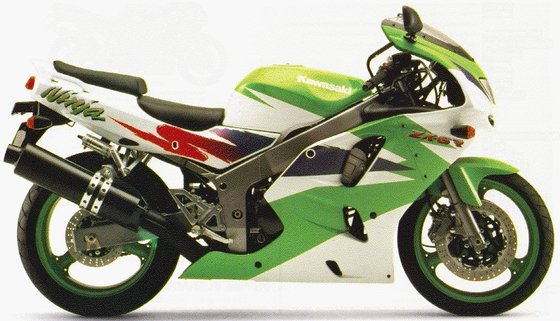
Owning a 30-year-old sportbike isn’t for the faint of heart, but the ZX-6R rewards diligent owners. Key maintenance considerations:
- Valve Adjustments: Every 6,000 km (3,700 miles). Intake valves: 0.15–0.24 mm (0.006–0.009 in), exhaust: 0.22–0.31 mm (0.009–0.012 in).
- Oil Changes: 3.6L (3.8 qt) with filter. Use SAE 10W-40 (API SG or newer).
- Carb Tuning: The Mikuni CVKD36 carbs demand periodic synchronization. Upgrade to aftermarket jets for smoother throttle response.
- Cooling System: 2.7L (0.7 gal) of ethylene glycol coolant. Watch for aging radiator hoses.
- Chain Care: The 108-link chain and 15/40 sprockets wear quickly under hard use. Opt for a premium X-ring chain.
MOTOPARTS.store Recommendations:
- Upgrade suspension with modern cartridge emulators and a progressive rear shock.
- Install stainless-steel brake lines for firmer lever feel.
- Swap the stock exhaust for a lightweight slip-on to unleash the inline-four’s soundtrack.
Conclusion: A Timeless Thrill 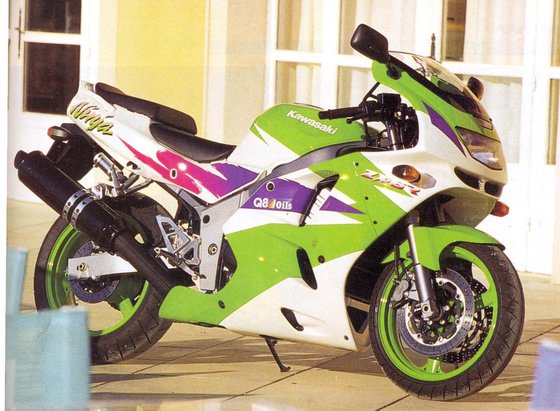
The 1994–1997 Kawasaki ZX-6R Ninja isn’t perfect—but that’s why we love it. Its quirks (soft suspension, peaky power delivery) are outweighed by raw character and a soulful engine that embodies the ’90s sportbike ethos. For riders seeking a vintage supersport that’s equal parts project and passion, the ZX-6R delivers. And with MOTOPARTS.store’s catalog of upgrades, this Ninja can still humble modern middleweights on a twisty backroad—or at least sound fantastic trying.

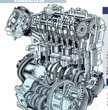
Specifications sheet
| Engine | |
|---|---|
| Stroke: | Four-stroke |
| Max power: | 76 kW | 102.0 hp |
| Max torque: | 64 Nm |
| Fuel system: | 4 x 36mm Mikuni CVKD36 carburetors |
| Max power @: | 12500 rpm |
| Displacement: | 599 ccm |
| Max torque @: | 10000 rpm |
| Configuration: | Inline |
| Cooling system: | Liquid |
| Compression ratio: | 11.8:1 |
| Number of cylinders: | 4 |
| Dimensions | |
|---|---|
| Wheelbase: | 1466 mm (57.7 in) |
| Dry weight: | 187 |
| Wet weight: | 222 |
| Seat height: | 810 mm (31.9 in) |
| Fuel tank capacity: | 18.2 L (4.8 US gal) |
| Drivetrain | |
|---|---|
| Final drive: | chain |
| Chain length: | 108 |
| Transmission: | 6-speed |
| Rear sprocket: | 40 |
| Front sprocket: | 15 |
| Maintainance | |
|---|---|
| Rear tire: | 160/60 z-17 |
| Engine oil: | 10W40 |
| Front tire: | 120/60 z-17 |
| Break fluid: | DOT 4 |
| Spark plugs: | NGK CR9E or NGK CR9EIX |
| Spark plug gap: | 0.8 |
| Coolant capacity: | 2.7 |
| Forks oil capacity: | 0.65 |
| Engine oil capacity: | 3.6 |
| Engine oil change interval: | Every 5000km or 2 years, whichever comes first |
| Valve clearance (intake, cold): | 0.15–0.24 mm |
| Valve clearance check interval: | 24,000 km / 15,000 mi |
| Valve clearance (exhaust, cold): | 0.22–0.31 mm |
| Recommended tire pressure (rear): | 2.6 bar (38 psi) normal, 2.9 bar (42 psi) with load |
| Recommended tire pressure (front): | 2.2 bar (32 psi) normal, 2.5 bar (36 psi) with load |
| Chassis and Suspension | |
|---|---|
| Rear brakes: | Single 220mm disc, 1-piston caliper |
| Front brakes: | 2 x 300mm discs, 4-piston calipers |
| Rear suspension: | Single Showa shock, adjustable preload and rebound damping |
| Front suspension: | 41mm Showa telescopic forks |
| Rear wheel travel: | 129.5 mm (5.1 in) |
| Front wheel travel: | 120 mm (4.7 in) |



